▼音声で学びたい方はこちらへ🐻

▼CROWN1-高1《Lesson4》はこちらから🐻
- 授業前にひとこと
- 勉強のポイント
- 本文&和訳
- 重要単語
- 重要ポイント
- 【1】Four Japanese high school students from Aomori are visiting their sister school in Sydney, Australia.
- 【2】They are on a study tour to learn about Australian history and culture.
- 【3】They are going to give a presentation about Japanese prehistory.
- 【4】Shota will be the first speaker.
- 【5】Introduction: Dogu and Australian cave paintings
- 【6】Good morning. Yesterday you introduced us to some examples of Australian prehistoric paintings.
- 【7】We were very impressed.
- 【8】Some of the paintings reminded us of Japan’s prehistoric artifacts.
- 【9】The photo on the left is an example of dogu (cf. photo 1).
- 【10】They are earthen figures created in the Jomon period (c. 11,000 B.C. – c. 500 B.C.).
- 【11】The Australian cave painting on the right is probably older (cf. photo 2).
- 【12】There is something strange and mysterious about both these prehistoric artifacts.
- 【13】You can’t take your eyes away.
- 【14】In a moment, we’ll tell you more about Japan’s mysterious little dogu.
- 【15】But first, we’d like to share with you what we’ve learned about life in the Jomon period.
- 【16】Incidentally, the Jomon period gets its name from the “rope patterns” that appear in its pottery (cf. photo 3).
- 【17】People have found Jomon artifacts all over Japan.
- 【18】Misaki, our next speaker, will tell you about what was discovered at one of the most important sites: Sannai-Maruyama.
授業前にひとこと


今回から、CROWN1-高1《Lesson4》について扱っていきます❗️
Lesson4のタイトルは…🐻
Digging into Mystery
という「海外の高校生に縄文文化についてプレゼンをする」お話です。
ちなみに、このLessonでメインで確認したい文法事項は…
過去完了・過去完了進行形
です❗️
さて、いつも授業前に説明することですが…
⇧に載せてあります『単語・和訳・英作文トレーニング』をテスト1週間前から毎日やってみてください❗️曖昧な理解がなくなり、成績が爆伸びします!!
コミュ英以外の定期テスト対策は?
現代文の定期テスト対策は こちら から
古文の定期テスト対策は こちら から
漢文の定期テスト対策は こちら から
teite channel をもっと活用する


▷ 解説記事のリクエスト
▷ 新着情報のキャッチ
▷ 定期テスト予想問題
▷ オリジナルグッズの購入
ができるようになっています🐻
teite channel の 公式LINEアカウント はこちら
勉強のポイント
①本文は、一人目の話し手であるショータが、縄文時代の紹介プレゼンをする場面であることを理解する。
②単語・重要ポイントをインプットする。
③過去完了・過去完了進行形について理解する。
本文&和訳
序章
Four Japanese high school students from Aomori are visiting their sister school in Sydney, Australia.
青森から4人の日本の高校生がオーストラリアのシドニーにある彼らの姉妹校を訪れています。
They are on a study tour to learn about Australian history and culture.
彼らはオーストラリアの歴史や文化について学ぶ研修旅行に参加しています。
They are going to give a presentation about Japanese prehistory.
彼らは日本の先史時代についてプレゼンをすることになっています。
Shota will be the first speaker.
ショータは一人目の話し手の予定です。
テーマ
【1】Introduction: Dogu and Australian cave paintings
紹介:土偶とオーストラリアの洞窟の壁画
本文
Good morning. Yesterday you introduced us to some examples of Australian prehistoric paintings.
おはようございます。昨日、あなたたちは私たちにオーストラリアの先史時代の絵画のいくつかの例を紹介してくれました。
We were very impressed.
私たちはとても感動しました。
Some of the paintings reminded us of Japan’s prehistoric artifacts.
その絵画のいくつかは私たちに日本の先史時代の遺物を思い出させてくれました。
The photo on the left is an example of dogu (cf. photo 1).
左の写真は土偶の例です(参照:写真1)
They are earthen figures created in the Jomon period (c. 11,000 B.C. – c. 500 B.C.).
それらは縄文時代(紀元前 約11000〜500年)に作られた土偶(土器の像)です。
The Australian cave painting on the right is probably older (cf. photo 2).
右のオーストラリアの洞窟の絵画(壁画)はおそらくより古いです(参照:写真2)
There is something strange and mysterious about both these prehistoric artifacts.
両方のこれらの先史時代の遺物について奇妙で神秘的な何かがあります。
You can’t take your eyes away.
あなたは目を逸らすことはできません。
In a moment, we’ll tell you more about Japan’s mysterious little dogu.
すぐに、私たちはあなたたちに日本の神秘的な小さな土偶についてもっと話をするつもりです。
But first, we’d like to share with you what we’ve learned about life in the Jomon period.
しかしまず、私たちはあなたたちと縄文時代の生活について学んできたことを共有したいと思っています。
Incidentally, the Jomon period gets its name from the “rope patterns” that appear in its pottery (cf. photo 3).
ちなみに、縄文時代はその名前を、その時代の陶器に現れる「縄の模様」から取っています。
People have found Jomon artifacts all over Japan.
人々は日本の至るところにある縄文時代の遺物を探してきました。
Misaki, our next speaker, will tell you about what was discovered at one of the most important sites: Sannai-Maruyama.
私たちの次の話し手であるミサキは、あなたたちに三内丸山遺跡という最も重要な場所の一つで発見されたものについて話すでしょう。
重要単語


V : 動詞 , Ving : 動名詞 , Vpp : 過去分詞, O:目的語, C:補語
| dig | 〜を掘る |
| mystery | 神秘 |
| Sydney | シドニー |
| presentation | プレゼン |
| prehistory | 先史時代 |
| introduction | 紹介 |
| cave | 洞窟 |
| prehistoric | 先史時代の |
| impress | 感動させる |
| artifact | 遺物 |
| earthen | 土器 |
| mysterious | 神秘的な |
| incidentally | ついでに、ちなみに |
| pattern | 柄、模様 |
| pottery | 陶器 |
重要ポイント
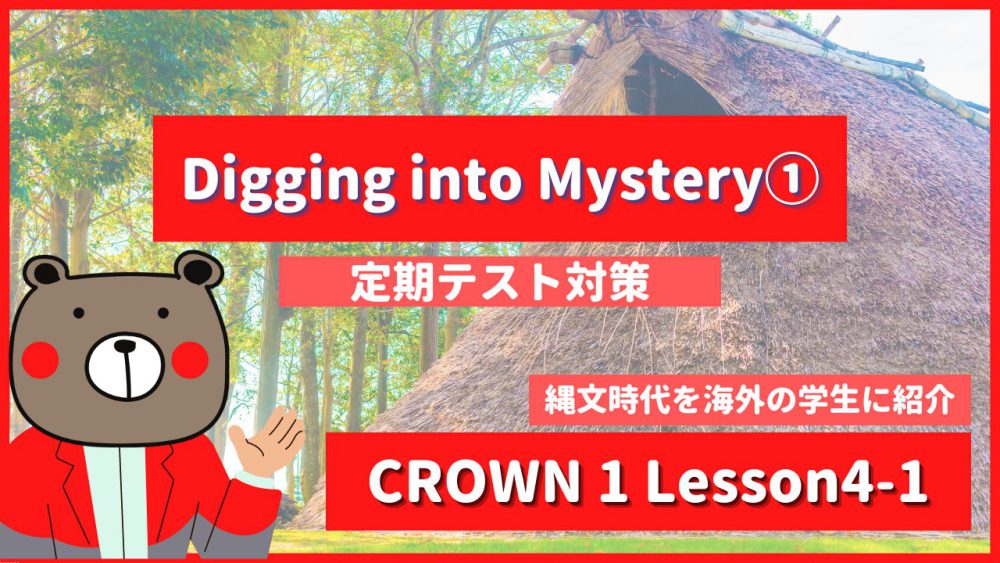

「ピンク」=重要ポイント
▼記号について
V : 動詞 Ving : 動名詞 Vpp : 過去分詞
【 】名詞句・節 〈 〉形容詞句・節 ( )副詞句・節
S:主語 O:目的語 C:補語 M:副詞
【1】Four Japanese high school students from Aomori are visiting their sister school in Sydney, Australia.
《和訳》
青森から4人の日本の高校生がオーストラリアのシドニーにある彼らの姉妹校を訪れています。
《重要ポイント》
「Four Japanese high school students from Aomori ~」= 青森から4人の日本の高校生が〜
・長いけど、ここまでが主語❗️
「~ are visiting their sister school in Sydney, Australia」= オーストラリアのシドニーにある彼らの姉妹校を訪れています
・「sister school」= 姉妹校
・姉妹校とは、親善・研究交流などの目的で、特別に親しい関係にある二つの学校。 また、同一大学の付属校同士というような関係にある二つの学校のことをいいます❗️
・「in Sydney, Australia」= オーストラリアのシドニーの
ちなみに…
英語の住所の書き方は日本語と逆❗️
【日本語】東京都港区赤坂
【英語】Aksaka, Minatoku, Tokyo
・日本語は目的地に向けて、どんどん視野を絞っていくイメージ(広い→狭い)
・英語は逆で目的地から、どんどん視野を広げていくイメージ(狭い→広い)
▷こういう日本語と英語の違いを学ぶのも外国語の勉強なのさ🐻
【2】They are on a study tour to learn about Australian history and culture.
《和訳》
彼らはオーストラリアの歴史や文化について学ぶ研修旅行に参加しています。
《重要ポイント》
「They are on a study tour」= 彼らは研修旅行の最中です
・「be on ~」= ~に参加している
・「study tour」= 研修旅行
「to learn about Australian history and culture」= オーストラリアの歴史や文化について学ぶための
・「to + V」で表す不定詞の形容詞的用法❗️
・前の名詞「a study tour」を後ろから補足説明しています。
・「Australian」= オーストラリアの
【3】They are going to give a presentation about Japanese prehistory.
《和訳》
彼らは日本の先史時代についてのプレゼンをすることになっています。
《重要ポイント》
「They are going to give a presentation」= 彼らはプレゼンをすることになっています
・「be going to V」= Vすることになっている
・「presentation」= プレゼン
「about Japanese prehistory」= 日本の先史時代について
・これは形容詞句として名詞「a presentation」を後ろから補足説明しています❗️
・「prehistory」= 先史時代
【4】Shota will be the first speaker.
《和訳》
ショータは一人目の話し手の予定です。
《重要ポイント》
ここは特になし❗️
【5】Introduction: Dogu and Australian cave paintings
《和訳》
紹介:土偶とオーストラリアの洞窟の壁画
《重要ポイント》
「Introduction」= 紹介
「cave paintings」= 洞窟の壁画
・「cave」= 洞窟
・「painting」= 絵画
【6】Good morning. Yesterday you introduced us to some examples of Australian prehistoric paintings.
《和訳》
おはようございます。昨日、あなたたちは私たちにオーストラリアの先史時代の絵画のいくつかの例を紹介してくれました。
《重要ポイント》
「you introduced us to some examples」= あなたたちは私たちにいくつかの例を紹介してくれました
・「introduce A to B」= AをBに紹介する
・なので本来は「私たちをいくつかの例に紹介してくれた」が直訳💦
・ただ、Bにあたる部分が長い(some examples of Australian prehistoric paintings)ので、AとBの順番を変えたと捉えるのが適切でしょう❗️
ちなみに…
「introduce A to B」の順番についてはネイティブ的には関係ないそうです!
「AとBを引き合わせる」くらいに考えておくと良いと思います❗️
▼参考文献
「誰を誰に紹介するの introduceの語順は意味がない」
「of Australian prehistoric paintings」= オーストラリアの先史時代の絵画(壁画)の
・これは形容詞句として名詞「some examples」を後ろから補足説明しています❗️
・「prehistoric」= 先史時代の
【7】We were very impressed.
《和訳》
私たちはとても感動しました。
《重要ポイント》
「be impressed」= 感動した、感銘を受けた
・「impress」= ~を感動させる
【8】Some of the paintings reminded us of Japan’s prehistoric artifacts.
《和訳》
その絵画のいくつかは私たちに日本の先史時代の遺物を思い出させてくれました。
《重要ポイント》
「Some of the paintings reminded us of ~」= その絵画(壁画)のいくつかは私たちに〜を思い出させた
・「some of ~」= ~のいくつか
・「remind A of B」= AにBを思い出させる
「Japan’s prehistoric artifacts」= 日本の先史時代の遺物
・「artifact」= 遺物、人工物、工芸品
【9】The photo on the left is an example of dogu (cf. photo 1).
《和訳》
左の写真は土偶の例です(参照:写真1)
《重要ポイント》
「The photo on the left」= 左の写真
・「on the left」= 左の
・教科書ではこの写真は左側に載っています❗️
・ぜひ、教科書で写真を確認してね!
ちなみに…
学生以外の方で「教科書を購入して勉強したい❗️」という方もいると思います。
そういった方はこちらから、各都道府県ごとで教科書を販売している書店(教科書販売店)を確認できます!
教科書は、どの年代の方にとってもめちゃくちゃ良い参考書です。
学生の方が、予習で買うもよし!
社会人の方が、教養として買うもよし!
▼参考サイト
「全国教科書供給協会」
「 (cf. photo 1)」= (参照:写真1)
・「cf.」= 「confer(参照する)」の略
【10】They are earthen figures created in the Jomon period (c. 11,000 B.C. – c. 500 B.C.).
《和訳》
それらは縄文時代(紀元前 約11000〜500年)に作られた土偶(土器の像)です。
《重要ポイント》
「They are earthen figures」= それらは土偶(土器の像)です
・「earthen」= 土器
・「figure」= 姿、形、枠
・「earthen figures」で土偶と訳すことが多いです❗️
「~ created in the Jomon period」= 縄文時代に作られた〜
・Vpp(過去分詞)は分詞なので、形容詞の役割❗️
・これは前の名詞「earthen figures」を後ろから補足説明してます❗️
「 (c. 11,000 B.C. – c. 500 B.C.)」= (紀元前 約11000〜500年)
・「c.」= だいたい、約 (ラテン語の「circa(近似)」の略❗️)
・「B.C.」= 紀元前(「Before Christ(キリスト誕生以前)」の略❗️)
【11】The Australian cave painting on the right is probably older (cf. photo 2).
《和訳》
右のオーストラリアの洞窟の絵画(壁画)はおそらくより古いです(参照:写真2)
《重要ポイント》
「The Australian cave painting on the right ~」= 右のオーストラリアの洞窟の絵画(壁画)
・ここまでが、長いけど主語❗️
・「on the right」= 右の
・教科書ではこの写真は右側に載っています❗️
・ぜひ、教科書で写真を確認してね!
「is probably older」= 〜はおそらくより古いです
・「probably」= おそらく、多分
・「older」= より古い
「 (cf. photo 2)」= (参照:写真2)
・「cf.」= 「confer(参照する)」の略
【12】There is something strange and mysterious about both these prehistoric artifacts.
《和訳》
両方のこれらの先史時代の遺物について奇妙で神秘的な何かがあります。
《重要ポイント》
「There is something strange and mysterious」= 奇妙で神秘的な何かがあります
・「there is ~」= ~がある
・「something ~」= ~な何か
・「something」は1語の形容詞でも、後ろから補足説明をする特殊な名詞です❗️
(基本的には1語の場合は前から補足説明します (例)good boy )
・「strange」= 奇妙な
・「mysterious」= 神秘的な
「about these prehistoric artifacts」= これらの先史時代の遺物について
【13】You can’t take your eyes away.
《和訳》
あなたは目を逸らすことはできません。
《重要ポイント》
「take one’s eyes away」= 目を逸らす
【14】In a moment, we’ll tell you more about Japan’s mysterious little dogu.
《和訳》
すぐに、私たちはあなたたちに日本の神秘的な小さな土偶についてもっと話をするつもりです。
《重要ポイント》
「In a moment」= すぐに
「we’ll tell you more」= 私たちはあなたたちにもっと話をするつもりです
「about Japan’s mysterious little dogu」= 日本の神秘的な小さな土偶について
【15】But first, we’d like to share with you what we’ve learned about life in the Jomon period.
《和訳》
しかしまず、私たちはあなたたちと縄文時代の生活について学んできたことを共有したいと思っています。
《重要ポイント》
「But first,」= しかしまず、
「we’d like to share with you」= 私たちはあなたたちと共有したい
・「would like to V」= Vしたい
・「share A with B」= AをBと共有する
・今回Aに当たる部分(what ~ period)が長いので、Bの後ろに書いてあります❗️
「what we’ve learned about life in the Jomon period」= 私たちが学んだこと
・「what S V」= SがVしたこと
・先行詞を含んだ関係代名詞(what = the thing which)ともいわれます❗️
「about life in the Jomon period」= 縄文時代の生活について
【16】Incidentally, the Jomon period gets its name from the “rope patterns” that appear in its pottery (cf. photo 3).
《和訳》
ちなみに、縄文時代はその名前を、その時代の陶器に現れる「縄の模様」から取っています。
《重要ポイント》
「incidentally」= ちなみに、ついでに
「the Jomon period gets its name 」= 縄文時代はその名前を得ています(取っています)
「from the “rope patterns”」= 「縄の模様」から
「that appear in its pottery」= その時代の陶器に現れる
・これは主格の関係代名詞「that」が使われてます❗️
・「”the rope pattern”」を後ろから補足説明してます。
・「appear」= 現れる
・「pottery」= 陶器
【17】People have found Jomon artifacts all over Japan.
《和訳》
人々は日本の至るところにある縄文時代の遺物を探してきました。
《重要ポイント》
「People have found Jomon artifacts」= 人々は縄文時代の遺物を探してきました
・「have + Vpp(過去完了)」で表す現在完了❗️
・過去も、今も探してきているということです。
・「過去〜現在」へとつながる時間感覚を理解してね!
【18】Misaki, our next speaker, will tell you about what was discovered at one of the most important sites: Sannai-Maruyama.
《和訳》
私たちの次の話し手であるミサキは、あなたたちに三内丸山遺跡という最も重要な場所の一つで発見されたものについて話すでしょう。
《重要ポイント》
「Misaki, our next speaker, ~」= 私たちの次の話し手であるミサキは〜
・これは「同格」のカンマ❗️
・つまり「Misaki」を「our next speaker」が補足説明している!
「~ will tell you about what was discovered」= 〜は発見されたものについてあなたたちに話すでしょう
・「tell A about B」= AにBについて話す
・「what S V」= SがVしたこと
・先行詞を含んだ関係代名詞(what = the thing which)ともいわれます❗️
「at one of the most important sites: Sannai-Maruyama」= 三内丸山遺跡という最も重要な場所の一つで
・「one of ~」= ~の一つ
・「site」= 場所
・「 : (コロン)」= 前の文の補足説明(具体例)をする役割❗️
・つまり「one of the most important sites」の具体例を出している。
・確かに三内丸山遺跡は重要な場所だな〜🐻


これで全て終了です❗️
「CROWN1-高1《Lesson4-1 | Digging into Mystery | p60》」おつかれさまでした🐻
過去完了・過去完了進行形だけでなく、知らない熟語や構文が出てきたり、単語のレベルも中学英語よりも徐々にレベルが上がってきて、少し苦戦しているんではないでしょうか❗️
復習&音読するのをお忘れなく!!
①授業前にひとこと、でも話しましたが…
⇧に載せてあります『単語・和訳・英作文トレーニング』をテスト1週間前から毎日やってみてください❗️曖昧な理解がなくなり、成績が爆伸びします!!
最後まで見てくださってありがとうございました!
またお会いしましょう!定期テストがんばれ〜🐻
じゃあね〜、バイバイ!!
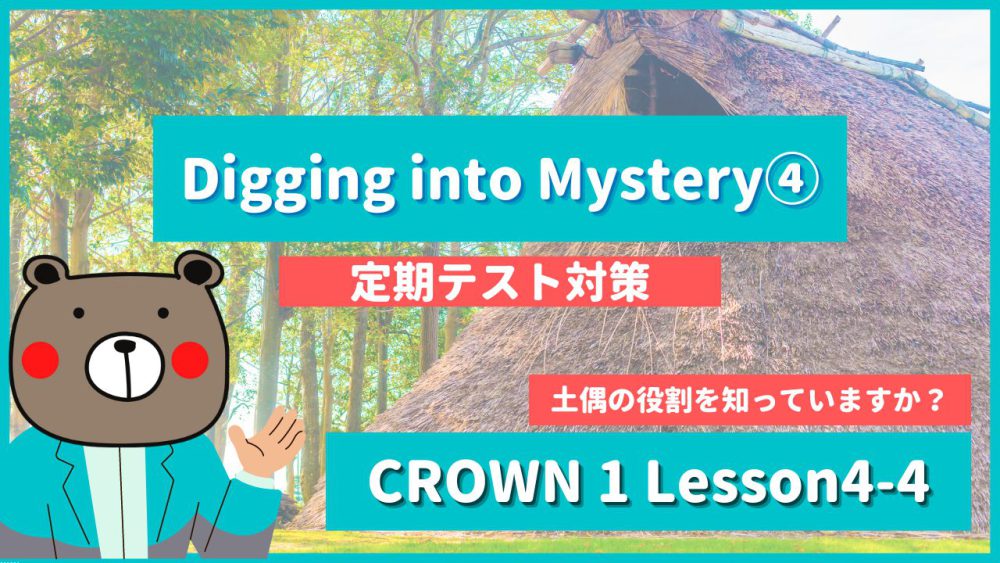
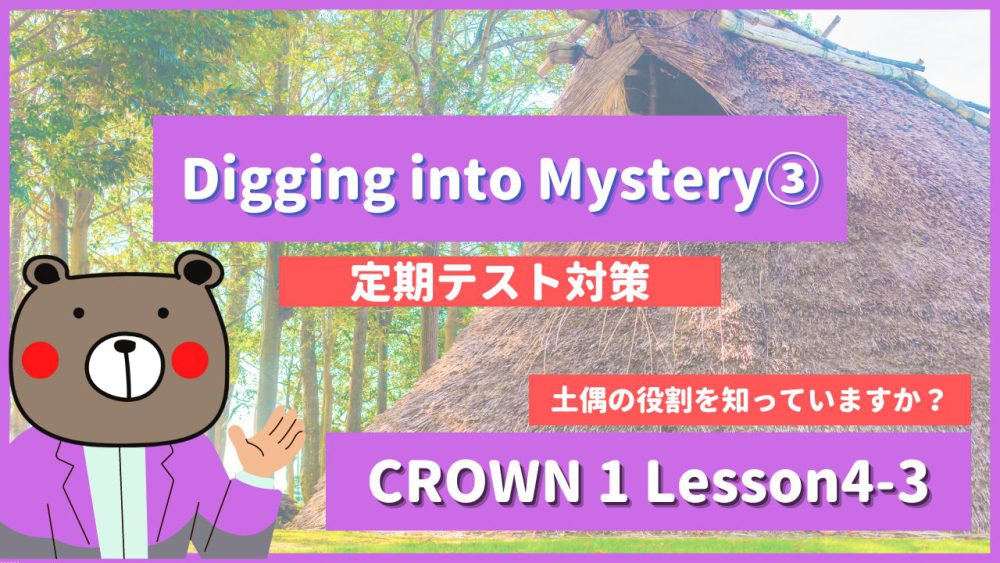
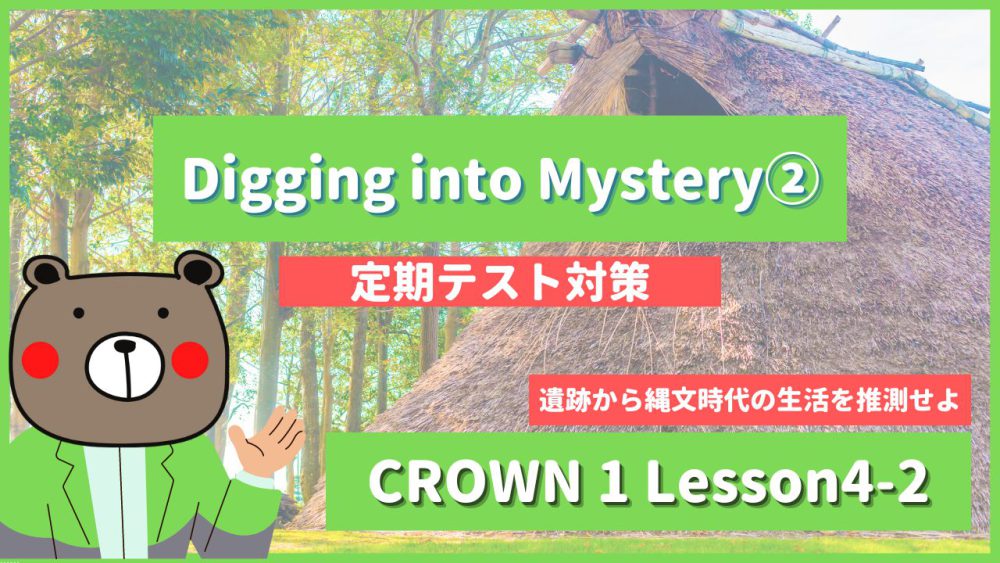
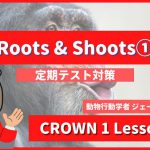
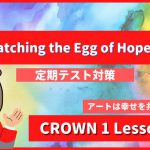
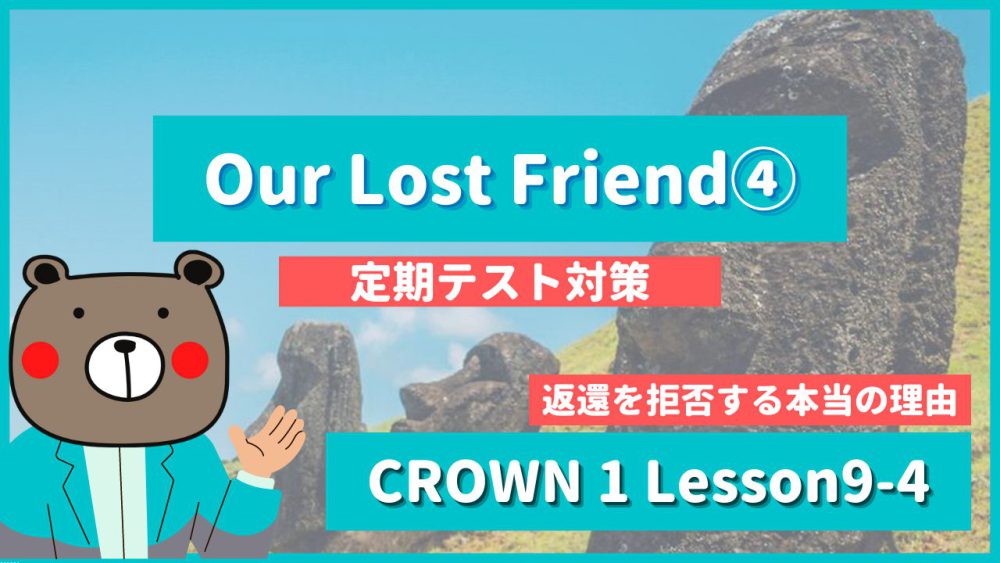
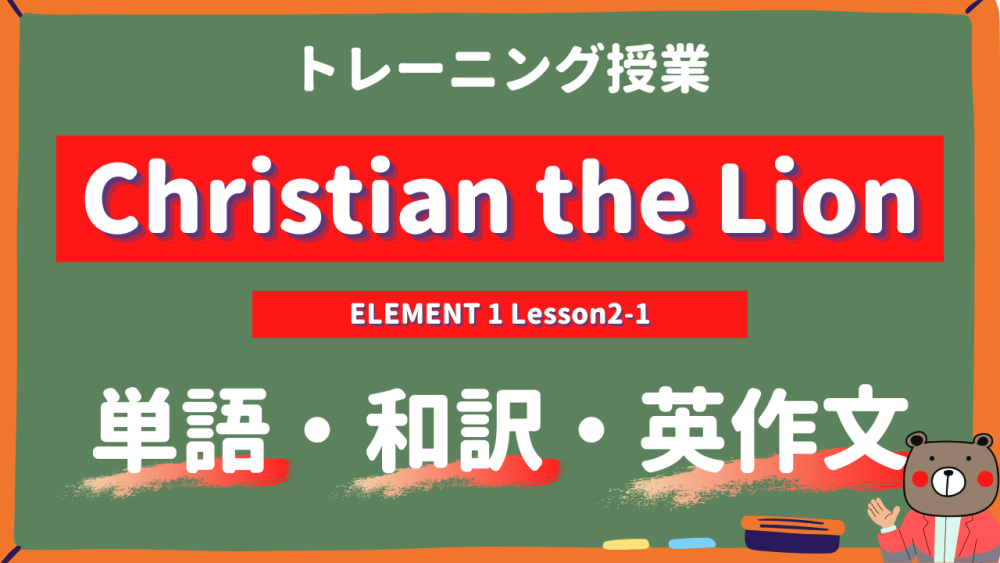
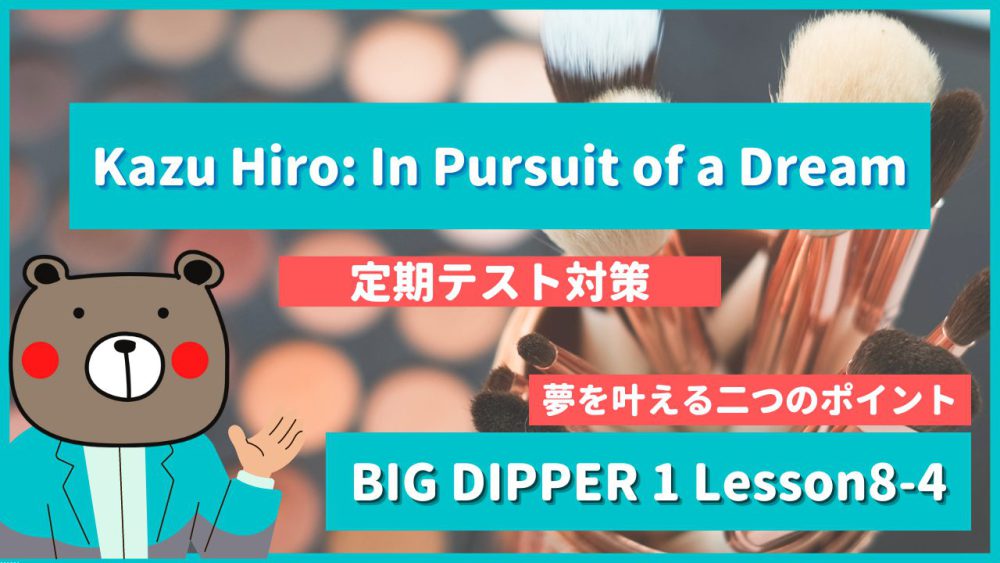

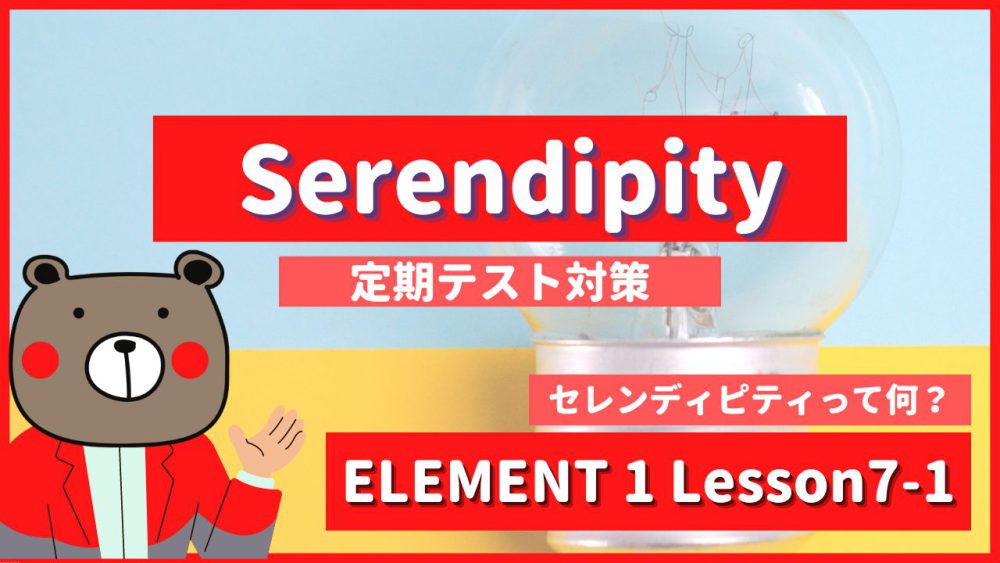
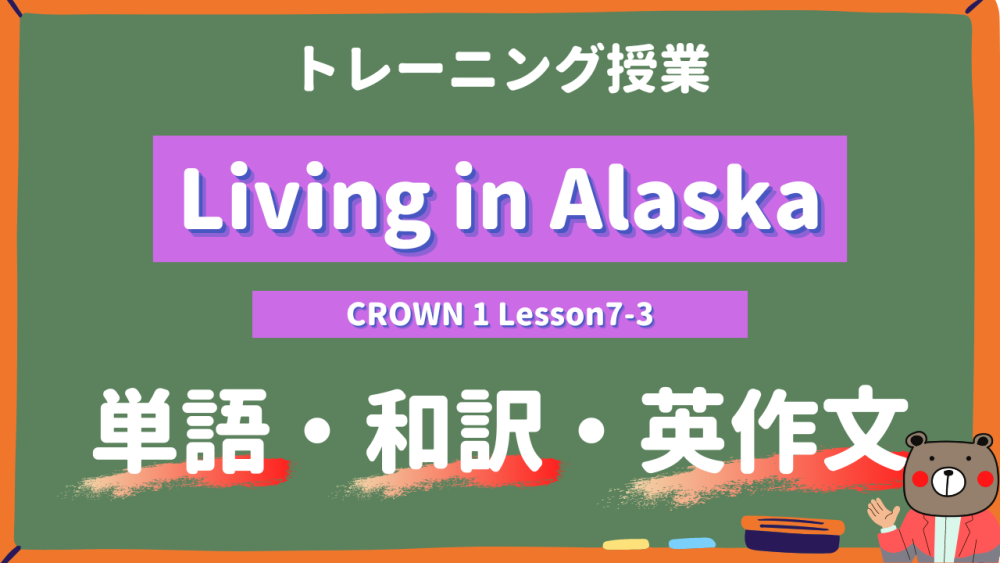
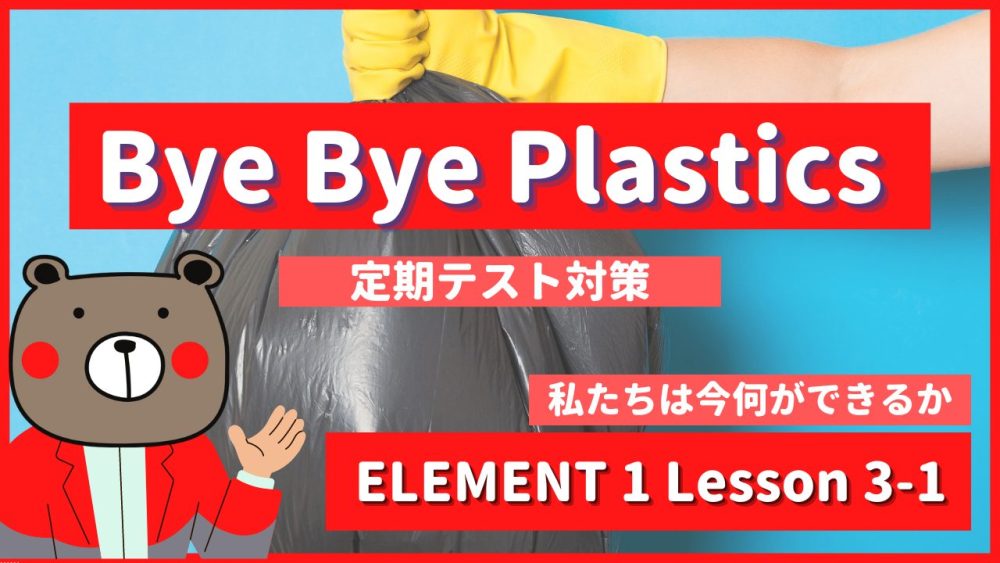
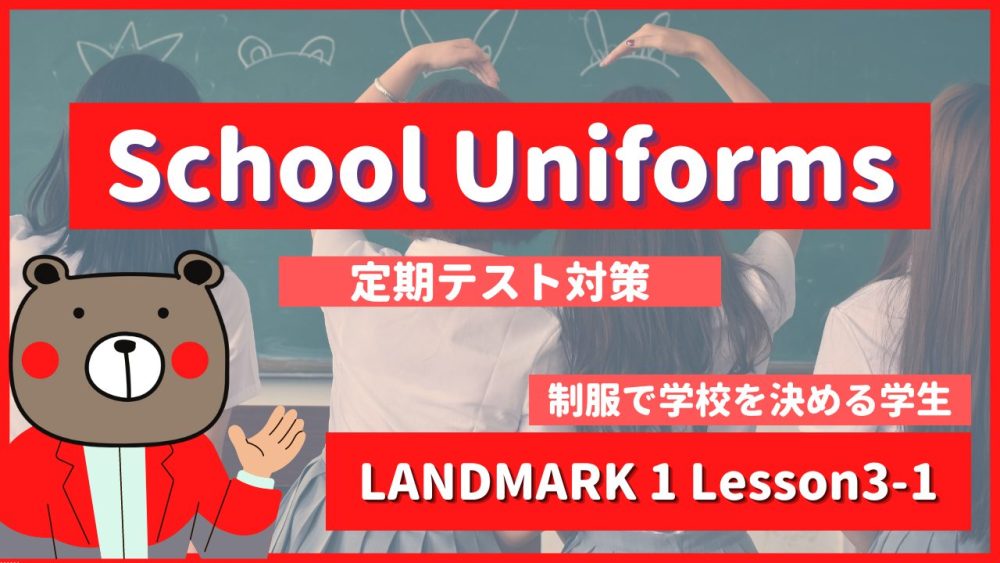
いつも助かってます ありがとうございます
素敵なメッセージありがとうございます!
執筆の励みになります!